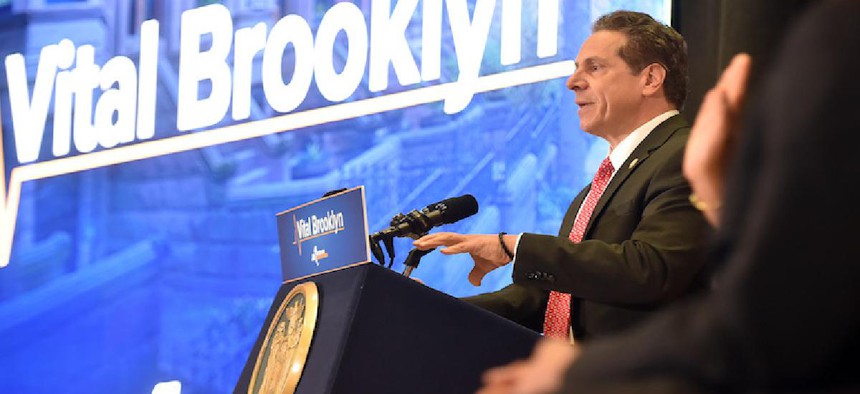In March, Gov. Andrew Cuomo announced a $1.4-billion plan to improve long-suffering areas of central Brooklyn. Brownsville would be a good place to start.
Consider this: For over a third of Brownsville residents, the only subway line within a half-mile is the No. 3 train, which offers no service between midnight and 5 a.m. But over half of the neighborhood’s residents work in jobs with non-traditional hours that may require them to take the train during off-hours. And it’s not only transportation that is inaccessible; there is a severe shortage of job opportunities, child care options, grocery stores and banks available in the neighborhood that make day-to-day tasks for parents that much more challenging.
Simply walking the streets of Brownsville can be perilous. In 2015, the 73rd Precinct, which serves the neighborhood, experienced the third-highest rate of violent felonies in the city. Residents point to a fear of crime and violence as a key reason they don’t use the few available parks, libraries and youth services in the area. Plus, limited after-school and summer programs for older kids means there are not enough activities to keep them positively engaged.
RELATED: Solving homelessness without understanding the problem
The Citizens’ Committee for Children documented much of the ailments Brownsville faces in our new report, From Strengths to Solutions: An Asset-Based Approach to Meeting Community Needs in Brownsville. The report reveals the stark lack of access to basic resources in Brownsville that most New York neighborhoods take for granted and the profound challenges for poor children and families with which the community struggles.
More than half of children in Brownsville live in poverty; fewer than half of working-age residents are employed; and over a quarter of adult residents lack a high school diploma.
In his announcement, Cuomo said the plan would be a “soup-to-nuts” effort to provide enough resources to central Brooklyn neighborhoods so residents could better help themselves. A lion’s share of his plan would be directed toward health care, followed by creating affordable housing, new jobs and more recreation space at state-funded housing developments.
We agree with this approach. The most striking aspect of our report is the resolve of the people in the community to change their trajectory and the efforts by residents and organizations to improve conditions. Every person we interviewed expressed an unwavering commitment to Brownsville and a desire to help bring positive change to the community and its residents.
But they can’t do it alone. They will need strategic investments from government and community partners to confront barriers to children’s well-being, build on programs that are in place but in short supply and develop new opportunities that will benefit the entire community.
RELATED: Protecting New Yorkers from the Trump agenda
State and local lawmakers’ need to focus their attention on key areas to help improve Brownsville, including:
- Expanding efforts to bring new affordable housing and economic development opportunities into the community, including adult education, skills training programs and jobs.
- Identifying solutions to make basic community resources such as banks, grocery stores and transportation more accessible, including exploring transportation and food retail alternatives such as shuttle service in isolated areas.
- Ensuring adequate capacity in licensed early childhood education to meet the demand, especially for infants and toddlers, and developing new after-school and summer activities, particularly for older children.
Our report points to a clear need and commitment in Brownsville to put resources in place that will build a safer, stronger community in which all children and families thrive.
Residents deserve that chance, and we are ready to continue working with them and government leaders, community organizations, and philanthropic partners to make sure they get it.
Jennifer March is the executive director of Citizens’ Committee for Children.


